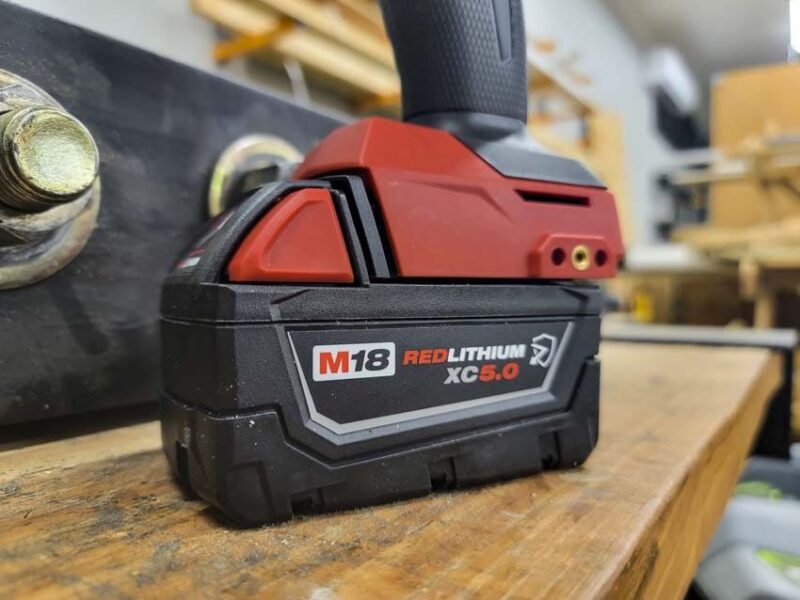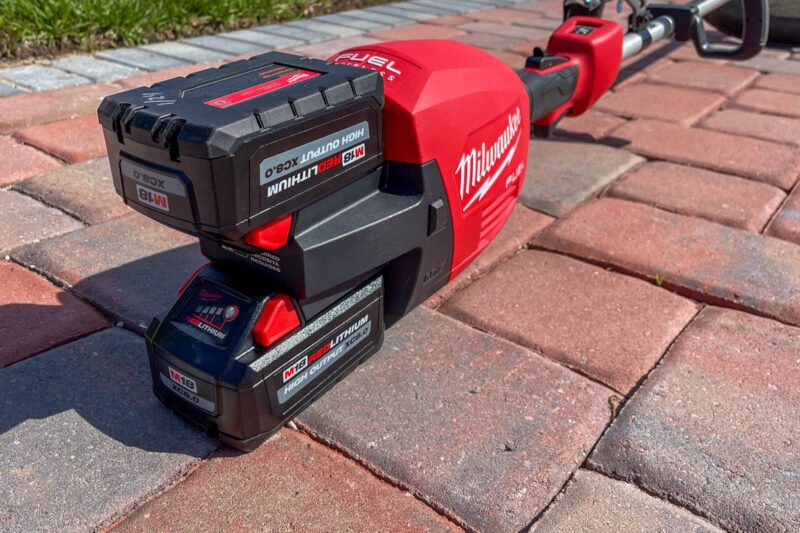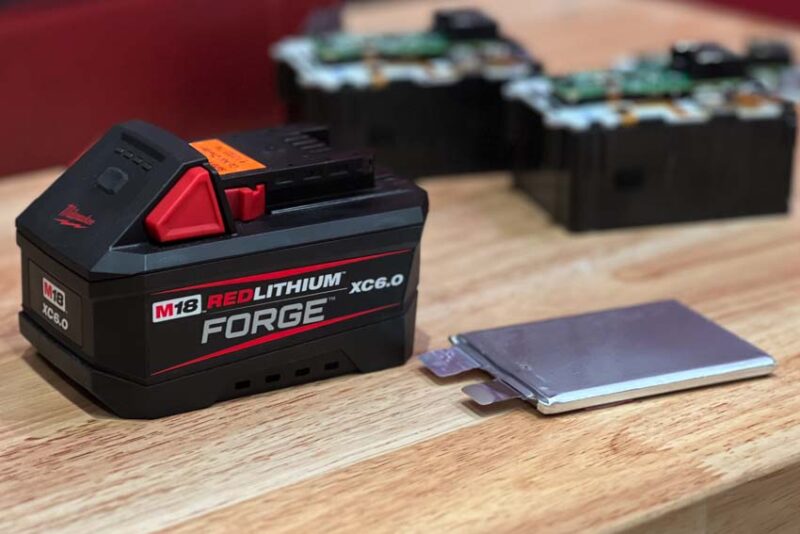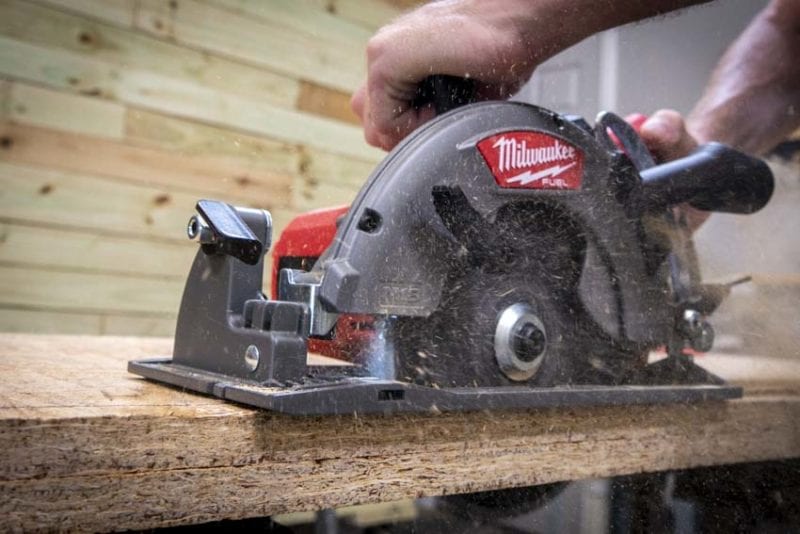For Tradesmen, the Milwaukee M18 Battery System is an Elite Professional Platform
When you’re ready to get into a cordless power tool platform for the first time or you’re ready to switch systems, it can be intimidating. Get it right, and your tools will make the job easier and more efficient. Get it wrong, and it can be a frustratingly expensive mistake. I’ve been the Managing Editor of Pro Tool Reviews for more than a decade and using Milwaukee M18 and M18 Fuel tools the entire time. I’m going to help you take a deeper dive into the M18 battery platform so you can decide if you should buy into it.
Milwaukee M18 Battery Overview
Before we look at the tools, let’s start with a deep dive into the power source. Milwaukee was the first cordless power tool brand to use lithium-ion batteries, and even has patents backing up their development. Unsurprisingly, the M18 platform includes battery technology that’s on the leading edge of innovation.
Standard Batteries

For the M18 battery system, there are a lot of batteries to choose from with multiple levels of technology.
While there are some older packs still in service, the foundational batteries are the 2.0Ah and 5.0Ah packs. These take the lead for the majority of handheld tools, such as impact drivers and drills. For those of you in the automotive sector, there’s also a 5.0Ah oil/grease/solvent resistant pack.
There is a newer 6.0Ah battery, but that model isn’t as popular as the 5.0Ah or the High Output version.
- 1.5Ah
- 3.0Ah
- 4.0Ah
- 5.0Ah
- 5.0Ah resistant
- 6.0Ah
High Output Batteries


The next step up is to High Output batteries. At each capacity level, they provide more efficient energy transfer that allows for more power to the tool and faster charging without too much heat build up that can limit the service life. With four batteries available, they bracket the entire M18 system with compact batteries for small tools to large-capacity packs for power-hungry tools such as the M18 Fuel lawn mower and M18 Fuel 12-inch miter saw.
There was a High Demand battery that came out before the High Output packs. However, those batteries have been displaced by the High Output models.
Here are the available capacities:
- 3.0Ah High Output
- 6.0Ah High Output
- 8.0Ah High Output
- 12.0Ah High Output
Forge Batteries


The most recent battery technology is Milwaukee Forge, and it’s hitting both the M18 and MX Fuel systems. Currently, the only M18 Forge battery is a 6.0Ah pack. However, we expect further development in the line.
The big deal is that it’s Milwaukee’s first pouch cell battery. If you’re new to the concept, it shifts the cells from a traditional round design to a flat pouch design, similar to the battery in your cell phone. Internally, the connections create less electrical resistance, leading to even better power delivery and faster charging. We have an article to help you dive deeper into pouch and tabless cell technologies.
Reliability
No battery lasts forever, and we’ve had a handful of older Milwaukee batteries head to the recycling center. Most packs have a reasonable life of 3 to 5 years, depending on how you use and store them. Considering I’ve been reviewing tools for more than 10 years, we expect to lose some.
More importantly for the purposes of this conversation, Milwaukee’s battery reliability has been excellent in my experience. I have lost a few prematurely, such as the now-replaced 9.0Ah High Demand packs. Even in those isolated cases, Milwaukee has you covered with a 3-year battery warranty.
Compatible Tools


Milwaukee’s flagship cordless system is compelling for a couple of reasons. First, there’s are more than 250 tools that all work on M18 batteries. It’s not just the number of tools, though, it’s also about what types of tools Milwaukee makes. Here’s an idea of what categories of tools you can power:
- General contracting
- Remodeling
- Carpentry
- Woodworking
- Concrete and masonry
- Plumbing
- Electrical
- Mechanical
- Automotive
- Metalworking and fabrication
- Layout
- Lighting
- Outdoor power equipment
Milwaukee M18 vs M18 Fuel: M18 tools have brushed motors and M18 Fuel tools have brushless motors. There are also a handful of M18 Brushless tools that have brushless motors but not the full top-of-the-line technology of M18 Fuel tools.
Characteristics
A quick look through the list of categories above shows you how dialed into professional tradesmen Milwaukee is. There are certainly some DIYers that enjoy using M18 products, but they are 100% designed with Pros in mind.
It’s something that’s evident in the performance of the tools. Core tools consistently compete for top rankings head-to-head against competitors. Trade-specific tools eliminate the need for cords, air hoses, and hydraulic pumps while improving performance over tools that use those power sources.
The quality of the tools is generally excellent. They’re designed for tough environments and tested on real jobsites. Looking back over the last ten years, I can’t think of a single production model M18 product that has failed on us, even after the warranties ended.
As a professional tool brand, Milwaukee’s main competitors are DeWalt, Makita, Flex, and Bosch, among others. The overall pricing in the professional class has spread out more than it was 5 years ago, and Milwaukee now generally sits in the upper middle when it comes to price.
For comparison, Flex tends to be close or lower to Milwaukee while DeWalt is more on par. Makita tends to run higher, as does Hilti.
You can buy Milwaukee M18 tools and batteries at Acme Tools, Home Depot, Ohio Power Tool, and a range of other retailers, including local hardware stores. However, there are no authorized Milwaukee dealers on Amazon. While you can buy them there, you may not get an authentic product, or you may end up with something off a return pallet. Either way, we don’t recommend buying these tools from Amazon.
The Bottom Line
If you’re a professional tradesman, Milwaukee M18 tools should be a serious consideration as you shop for a cordless platform you can rely on long-term. While it’s more expensive than some brands, the depth of available tools, class-leading innovation, Pro-driven performance, and quality make the tools worth it in the long run.





